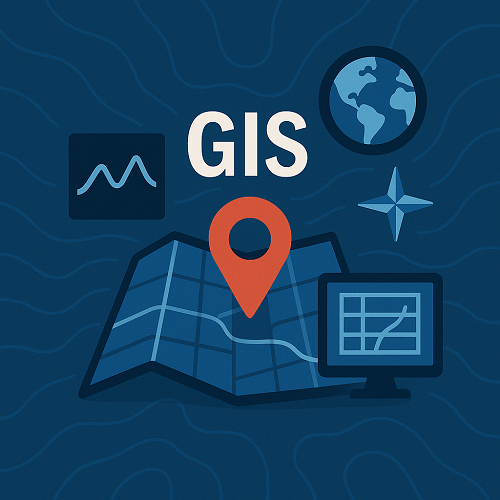TL;DR
- Artificial intelligence and machine learning are driving smarter spatial analytics.
- Cloud-based GIS platforms are mainstream, enabling real-time collaboration and scalable data storage.
- 3D and immersive GIS visualizations enhance urban planning and environmental monitoring.
- Integration with Internet of Things (IoT) devices allows live geospatial data updates.
- Businesses are adopting GIS for supply chain optimization, asset tracking, and climate resilience.
What’s New Right Now
As we step into 2025, Geospatial Information Systems are reaching new levels of intelligence and accessibility. Key developments include advances in AI-driven spatial modeling, rapid growth of cloud GIS platforms, and proliferation of IoT-enabled data streams. According to Esri and other leading industry players, the convergence of geospatial data with artificial intelligence has unlocked predictive and prescriptive analytics capabilities, helping organizations model future spatial scenarios (source).
Cloud GIS solutions have seen a sharp increase in demand due to hybrid work setups and the need for global collaboration. Platforms like ArcGIS Online and QGIS Cloud are supporting distributed teams in sharing, analyzing, and visualizing data seamlessly (source).
Meanwhile, the rise of 3D GIS and digital twins is revolutionizing urban and environmental planning. Real-time sensor integration is now standard in fleet monitoring and smart-city applications (source).
Why It Matters
For business leaders, GIS now represents a catalyst for data-led decision-making. Geospatial analytics empower better risk management and resource allocation. Retail chains, logistics firms, energy providers, and governments use these systems to anticipate disruptions and identify new growth territories. For technical stakeholders, modern GIS frameworks offer unprecedented scalability and automation. Integration with APIs, real-time feeds, and AI-driven models accelerates spatial computation and enables dynamic mapping workflows.
Simply put, GIS is not only mapping the world — it is modeling how the world changes.
Deep Dive into 2025 GIS Innovations
1. AI and Predictive Spatial Analytics
Machine learning algorithms refine spatial predictions such as flood risk or traffic density patterns. GIS datasets feed AI models that evaluate terrain changes, population trends, and infrastructure vulnerabilities. This results in data that is not only descriptive but predictive — vital for resilience planning.
2. IoT Integration for Real-Time Decisioning
Using connected sensors and remote devices, GIS software can ingest live telemetry from vehicles, drones, and weather stations. These real-time spatial updates power dashboards for emergency management and asset tracking. IoT-linked GIS reduces latency and improves situational awareness.
3. 3D GIS and Digital Twin Ecosystems
Organizations now build 3D models of facilities and cities that allow simulation of physical changes before they occur. These digital twins combine GIS, CAD, and BIM data layers to visualize assets and infrastructure performance over time.
4. Cloud-Native GIS Platforms
Transitioning to a cloud-first GIS environment simplifies system management, improves cross-team scalability, and eliminates hardware constraints. Enterprises are integrating GIS with major cloud providers for instant spatial computation.
Comparison of GIS Technology Trends (2025)
| Trend | Key Benefit | Use Case Example |
|---|---|---|
| AI-Augmented GIS | Predictive spatial analytics | Disaster preparedness and risk mapping |
| IoT-Connected GIS | Real-time monitoring | Smart-city traffic control |
| 3D GIS & Digital Twins | Immersive urban planning | Construction and infrastructure simulation |
| Cloud GIS | Scalability and collaboration | Multi-regional retail site analysis |
| Edge GIS Computing | Low-latency spatial processing | Autonomous vehicle geolocation |
Mini Case Study: Smart Port Operations Optimization
Problem: A coastal logistics hub struggled with inefficient vessel scheduling and congestion around docking zones, causing delays and higher fuel consumption.
Approach: The port authority deployed a cloud-based GIS combined with IoT sensors on ships and docking stations. Real-time spatial data was integrated with AI algorithms to predict optimal docking sequences and route assignments.
Outcome: Within six months, ship turnaround time decreased by 25%, fuel use dropped by 15%, and environmental compliance improved through data-driven insights. The GIS dashboard enabled transparent, collaborative decision-making among port operators and shipping companies.
Implementation Checklist: Getting Started with Modern GIS
- Define spatial goals — clarify what problems GIS should solve (e.g., asset management, risk mitigation, resource planning).
- Audit your existing data — ensure high-quality coordinates and metadata.
- Select the right platform — consider scalability, integrations, and cloud capabilities.
- Set up data pipelines — integrate real-time IoT or sensor feeds where useful.
- Train staff — empower analysts and decision-makers to interpret spatial results.
- Monitor and iterate — measure outcomes and refine models continuously.
FAQs
1. What’s driving GIS growth in 2025?
Demand for real-time spatial intelligence and predictive analytics, fueled by AI and IoT integrations, is driving adoption across industries.
2. Are cloud GIS platforms secure for enterprise use?
Modern cloud GIS providers use robust encryption, compliance audits, and role-based access controls, ensuring data integrity and regulatory compliance.
3. How does 3D GIS differ from traditional mapping?
3D GIS involves volumetric visualizations that model terrain, buildings, and utilities, offering richer context for spatial relationships compared to 2D maps.
4. Can GIS integrate with existing enterprise systems?
Yes, most GIS platforms offer APIs and connectors for ERP, CRM, and IoT networks, enabling seamless data integration.
5. What industries benefit most from advanced GIS?
Transportation, renewable energy, retail, logistics, urban planning, and insurance sectors are leading adopters of advanced GIS workflows.
6. How is AI changing spatial analysis?
AI improves pattern recognition, automates anomaly detection, and elevates predictive modeling within GIS, enhancing accuracy and operational efficiency.
Conclusion
The evolution of GIS in 2025 underscores its role as a transformative data ecosystem. By fusing AI, IoT, 3D visualization, and cloud computing, GIS is shaping intelligent infrastructure and smarter decision systems worldwide. To stay ahead, organizations should refine their spatial data strategies and explore our GIS services to enable location-powered growth.
